A review of The New Wild: Why Invasive Species Will Be Nature’s Salvation, by Fred Pearce. 2015. ISBN 978-0-8070-3368-5 / ISBN 978-0-8070-3369-2. Beacon Press, Boston. 245 pages.
The New Wild is an intriguing book that looks at non-native species and nature in new light, challenging popular notions of ‘nativism,’ ‘wild’ and nature’s ‘fragility.’ Although the author, Fred Pearce, has taken on a controversial topic, his sources show that he is not alone as an increasing number of ecologists and scientists are questioning the “good natives, bad aliens,” narrative. As a seasoned journalist with years of experience reporting environmental and development issues, Pearce strengthens his arguments with plenty of examples—most of which he has personally observed. The book critically reviews the vilification of non-native species, common misconceptions in ecosystem restoration, and pitfalls in conventional conservation.
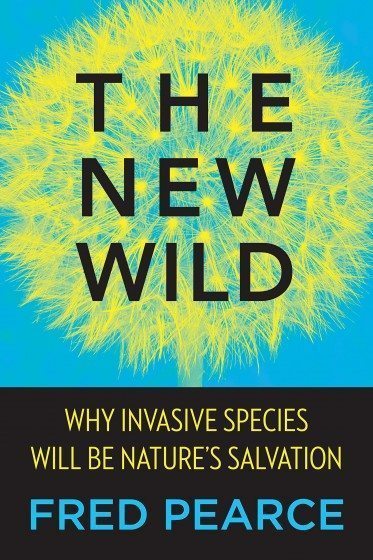 The first part of the book, ‘Alien empires,’ mainly deals with ‘horror stories’ of ‘alien invasive’ species. The aliens are often the subject of dislike for most of us conservative ecologists, invasive biologists and nature enthusiasts because of their stereotype portrayal as villains, both in literature and popular culture. With plenty of case studies, Pearce takes us through island habitats and the period of European conquests and colonization that facilitated transport of species across the world—some deliberately and some accidentally. Tales of the alien species that most of us fear—mutant mice that ate up eggs of ground-nesting birds and turtles on remote islands; weeds that choked up Lake Victoria; the zebra mussels that have extensively colonized waterways in North America; and more—are recounted here. Pearce elaborates on the cases that fueled the ‘good natives, bad aliens’ narrative. However, he points out that the aliens seem to be scapegoats in light of the larger (often real) problems that plague these habitats. Case-by-case, he argues how alien species “were simply taking advantage of ecosystems that had already been wrecked by humans.” Further, the introduced species seemed to be cleansing the degraded habitats they had colonized. Most aliens “keep nature going” where other species (mainly natives) falter.
The first part of the book, ‘Alien empires,’ mainly deals with ‘horror stories’ of ‘alien invasive’ species. The aliens are often the subject of dislike for most of us conservative ecologists, invasive biologists and nature enthusiasts because of their stereotype portrayal as villains, both in literature and popular culture. With plenty of case studies, Pearce takes us through island habitats and the period of European conquests and colonization that facilitated transport of species across the world—some deliberately and some accidentally. Tales of the alien species that most of us fear—mutant mice that ate up eggs of ground-nesting birds and turtles on remote islands; weeds that choked up Lake Victoria; the zebra mussels that have extensively colonized waterways in North America; and more—are recounted here. Pearce elaborates on the cases that fueled the ‘good natives, bad aliens’ narrative. However, he points out that the aliens seem to be scapegoats in light of the larger (often real) problems that plague these habitats. Case-by-case, he argues how alien species “were simply taking advantage of ecosystems that had already been wrecked by humans.” Further, the introduced species seemed to be cleansing the degraded habitats they had colonized. Most aliens “keep nature going” where other species (mainly natives) falter.
In the second part, ‘Myths and demons,’ Pearce challenges many ill-informed theories about nature and aliens. To protect ‘natural’ ecosystems, he finds conservationists often take it upon themselves to “cleanse” nature of the ‘invaders’ since “alien species encourage myth-making” about wounded environments: the vilification of alien species is easier than dealing with larger problems, such as human-induced environmental degradation. Some examples include:
- Britain’s efforts to eradicate muskrats with traps ended up slaughtering more than twice as many water voles.
- Eradication of rodents on Macquarie Island (a remote island between Australia and Antarctica) by mass poisoning also killed hundreds of birds.
- In Australia, the introduction of the poisonous cane toad as biocontrol for native beetles instead turned out to be lethal for local lizards, snakes, and even crocodiles.
- Once declared a national park, the Florida Everglades was reclaimed mainly by non-native flora, which also turned out to offer refuge for the endangered Florida panther. However, eradication of the alien weeds lead to further decline of the panther population.
These expensive and often counter-productive efforts of ‘cleansing’ have had appalling non-target mortality. The consequences of eradications seem unpredictable and often counterproductive. Pearce adds that the efforts of ecological cleansing “fail because conservationists have indulged ill-founded myths about aliens, pristine ecosystems, and how nature works.”
He then moves on to question the studies that are generally quoted by a wide range of academics, government organizations and NGOs—including the United Nations—to support the claims of the negative impacts of introduced species. It turns out that most of these studies do not seem to have statistically significant results to justify their claims. Also, the studies include only “trouble maker” species (that account for a small proportion of all alien species), while the silent majority seems to be ignored by these studies with a gross exaggeration of numbers. Pearce points to many methodological errors by the scientific community in assessing the extent of damage caused by introduced species on ecosystems. The book encourages a neutral approach, giving alien species both credit and debit points. For instance, in the US, cats are considered aliens that cause bird kills. But cats kill more rats than birds. So why not give them credit points, too, while running a cost-benefit analysis of aliens on the American economy
Pearce then moves on to some myth busting about the native and the pristine. Many scientists are contesting the 19th century romantic notion of pristine nature. An increasing amount of archeological evidence of human activities in ‘pristine’ forests is surfacing. Examples include the Amazon and the rainforests of Congo, which are not ‘untouched old growth’ forests. Pearce adds, “nothing is pristine, but nature is resilient and resourceful”… “We have assaulted forests on a large scale. Yet where we have walked away, they have generally revived.” Many species seem to be more disturbance-tolerant than is widely assumed and that nature is not as ‘fragile’ as is often portrayed. Cultural and religious beliefs of ‘nature’s harmony and balance’ seem to encourage such misconceptions. ‘Nativism’ is believed to be an essential part of nature’s balance according to many religious beliefs
In the chapter, ‘Nativism in the garden of Eden,’ the book critically analyses some basic theories of ecology and evolution including nativism and co-evolution. The author stresses that disruption is essential for evolution and “nativeness is not a sign of evolutionary fitness.” Although aliens can sometimes be problematic, not all natives are harmless. For instance, brown rats and black rats are believed to have originated from the region of the Indian sub-continent and China. There is even a temple in India where rats are worshiped. However, their status as native species does not exclude them from being considered as pests in both India and China.
Nativism seems to be stemming from the theory of co-evolution, where every relationship in a ‘balanced’ ecosystem is believed to have co-evolved. However, the book illustrates numerous examples in which newcomers have often fit in well into ecosystems, filling in the gaps. Here, the concept of ‘ecological fitting’ is introduced, where species might not have evolved together but, with time, they learn how to cooperate and function together. There is a constant turnover of new species and this “renewal is almost at random.” Ecosystems are often not “optimum” or nearing “perfection,” “they are often a workable mishmash of species that are constantly reorganizing.” Pearce maintains that ecosystems are more adaptive and random than is assumed.
Finally, in part 3, ‘The new wild,’ Pearce explores the way forward. With the example of the endangered Coqui frog in Puerto Rico, the author introduces the concept of novel ecosystems—“composed of new combinations of native species and species introduced by humans.” The Coqui moved from the native forest fragments and now thrives in the new forests that took over abandoned fields and which include a mix of native and alien vegetation. As established earlier, nothing is pristine; nature’s disposition has probably been ‘novel’ for centuries. Although this assortment of species is often written off as “messed up” nature, it still has great conservation value. Getting back to the example of the Coqui frog, which is still part of the red list of endangered species since its native habitat is threatened; Pearce portrays the disjunction of conservationists who do not acknowledge the Coqui’s new novel habitat. The new forests have huge conservation value and this should be acknowledged.
As a unique and extreme form of novel ecosystems, Pearce urges conservationists to see the great potential in urban badlands/brownfields that nurture numerous rare species. The success of brownfields suggests that nature just needs places that are left alone, with little human intervention. Brownfields might not fit the conventional definition of nature, but they have a huge potential for conservation. Pearce quotes the case of the Chernobyl nuclear station as one of the most remarkable brownfields where nature is making a huge comeback, including the return of large mammals, rodents, birds, and so on. Although highly radioactive, Chernobyl is an extreme example of “nature’s salvation and resilience.” He adds, “nature doesn’t care about conservationists’ artificial divide between urban and rural or native and alien species” or pristine and badlands. This is a powerful statement that we, as conservationists, ecologists, and nature enthusiasts, need to bear in mind. Pearce suggests that conservationists should move on from conventional conservation and its two main aims—“saving threatened species” and restoring nature to its pristine state; and adapt to current environmental realities that include changes due to climate change, pollution, habitat loss, and intensive agriculture. Aliens seem to be “rapidly changing from being part of the problem to part of the solution.” And they are the ‘new wild.’
With the onset of climate change, which is giving rise to an increasing number of climate refugees, adopting a zero tolerance approach towards migrants seems problematic. Previous ice ages and extreme climatic events are testament to massive migrations of species and evolutionary changes. As Prof. Chris Thomas of the University of York is quoted, “A narrow preservationist agenda will reduce rather than increase the capacity of nature to respond to the environmental changes that we are inflicting on the world.”
In the last paragraphs, Pearce expresses that there is no harm in intervening to protect certain aspects of nature that we cherish, nor is there harm in defending against “pests, diseases and inconvenient invaders.” But, “we are serving our own desires and not nature’s needs.” Nature might organize differently than we would like it to. “Open up to evolutionary changes. Let go and let nature take its course.” “…Nature never goes back, it always moves on. Alien invasions will not always be convenient for us, but nature will re-wild in its own way. That is the new wild.”
Species migrations have often occurred in the past and have been driven by various forces, including extreme weather events and geomorphological changes. There is merit to the argument that the term ‘native’ is subjective and depends on the time scale that is being considered. However, there is also truth to the claim that there are species that are harmful to us. Nonetheless, species should be judged based on their merits and not their origin. Humans should learn some tolerance and respect towards aliens. After all, we are responsible for species transportation, most often. As cultures evolve, what was once an exotic garden delight can turn into an eyesore. The social damage caused by aliens often seems to be higher than the actual environmental damage. Nothing is pristine and permanent. Nature is dynamic and resourceful, constantly evolving and reorganizing itself, often not fitting our paradigm. It might seem radical to adopt a completely non-interventional approach towards nature, as Pearce suggests. However, there are an increasing number of ecologists/conservationists who are open to newcomers and are giving them a chance; that is a good start.
The New Wild is persuasive, with well-supported arguments that make for a good read. The simple language and case studies make it easy for even a non-ecologist to follow. This book should be a must-read at the university level for future scientists, researchers, and conservationists, to develop an open mind towards non-native species.
As an ecologist who works in cultural landscapes, this book is refreshing. ‘Wild,’ to me, means spontaneous and not domesticated or cultivated. In many big European cities that I have visited, the median strip along roadways, the small patches of green at road junctions and other nooks and crannies in the city are beautifully decorated with colourful flowers—almost nearing perfection. It was only when I moved to Berlin that I noticed something different. It is refreshing to see dandelions and daffodils appear and vanish on their own. There seems to be a deliberate attempt to bring back the urban wild and it seems to be popular. Yes, it differs drastically from my notions of ‘wild’ as a child who grew up reading encyclopedias and watching National Geographic Channel and Discovery Channel. But, there is something magical about seeing what nature has to offer. Many of the spontaneously growing plants, often considered weeds elsewhere, add character to the city. Some are natives, some aliens. It doesn’t matter. To me, these spontaneous species are the new wild.
Divya Gopal
Berlin


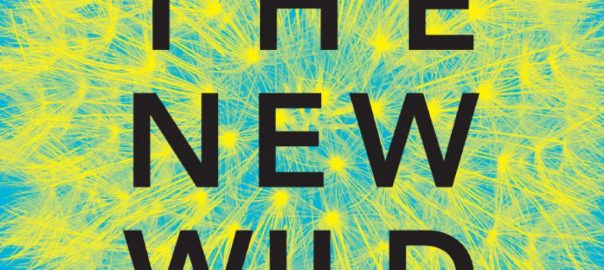
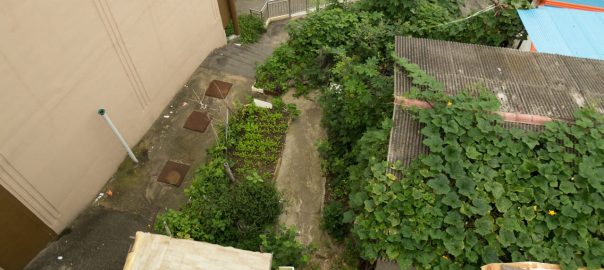
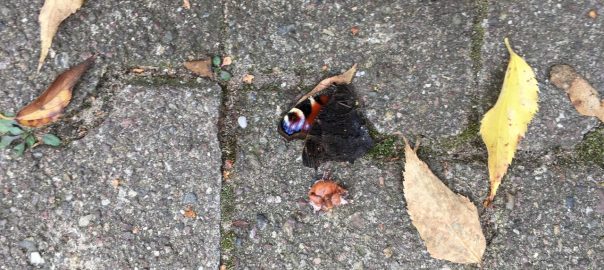
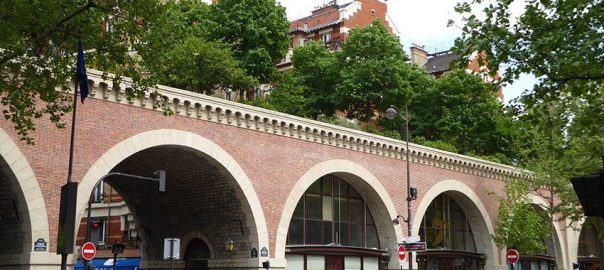
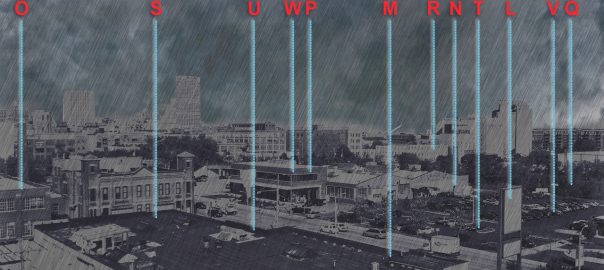
Leave a Reply